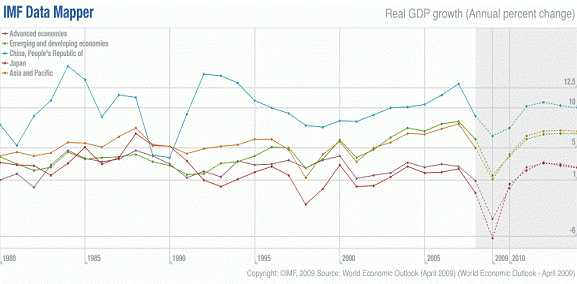While Japan has consistently had Asia's highest GDP based on PPP per capita, China has steadily led the pack vis-à-vis real GDP growth since the early 1990s. And China has charted a relatively independent path regarding GDP growth, consistently performing above global and emerging market growth trends, while the other countries noted have charted a roughly similar path. One could question the validity of China's official statistics and whether China has actually genuinely achieved growth above single digits, but the country's ability to consistently sustain growth in the high single digits is a testament to the size of its population, the strength of domestic demand, and its position as one of the world's economic juggernauts.

Stock market performance is also indicative of how China has gradually overtaken Japan as Asia's top economic power. At the height of the Japanese bubble in 1989, the Nikkei 225 reached its all time high of 39,000. The Nikkei has slowly, steadily declined ever since, and now hovers at around 10,000. By comparison, Hong Kong's Hang Seng has been a regional leader almost since it was founded. China's two other major stock markets – the Shanghai Composite and the Shenzhen Stock Exchange – have risen dramatically since they were founded in 1990 and 1991 respectively. China's extremely high currency reserves (more than US$2 trillion) give it a great deal of fiscal and monetary flexibility, while its stock of US$800+ billion in US treasuries makes it uniquely vulnerable to the vicissitudes of the US economy.

Source: TradingeEonomics.com
While Japan has invested relatively little in its domestic economy since the 1980s, China has invested a great deal in its indigenous infrastructure. When combined with reform policies designed to address its internal income gaps, the Chinese government has succeeded in greatly reducing extreme poverty and raising income levels in the country. Since 1991 China has increasingly invested in itself, preventing an over-reliance on foreign investment while enabling it to the world's de facto engine of growth.
